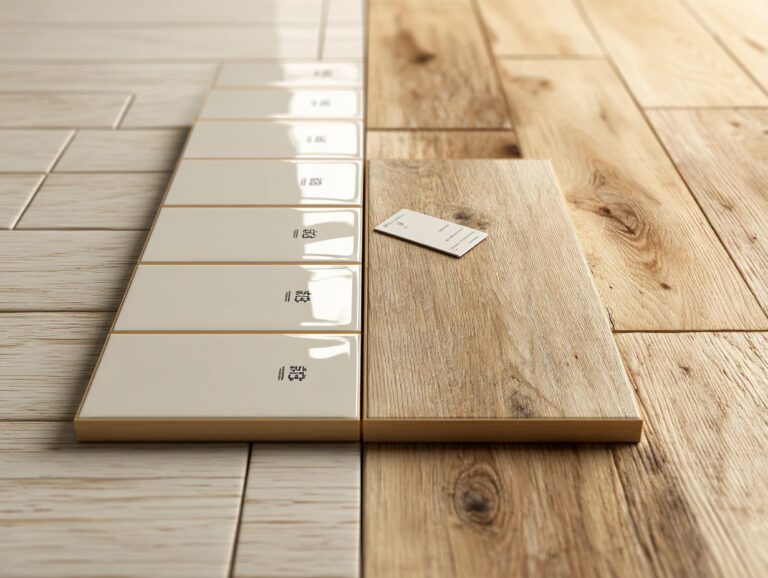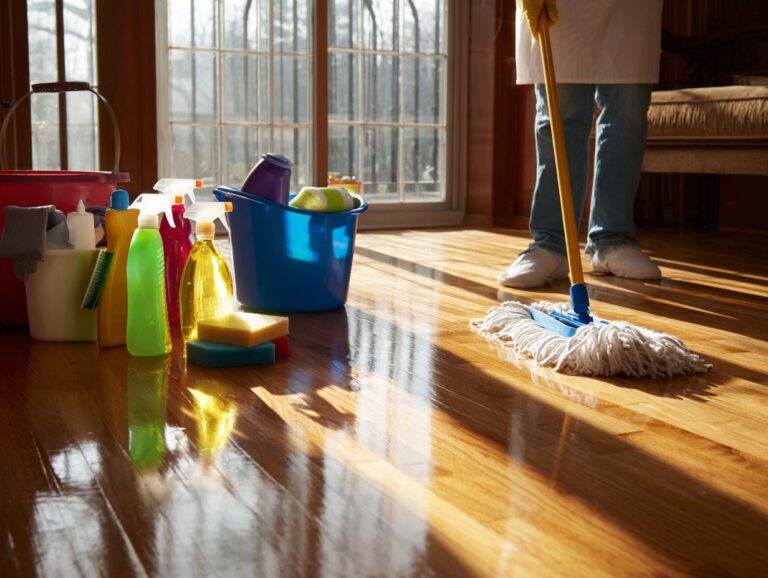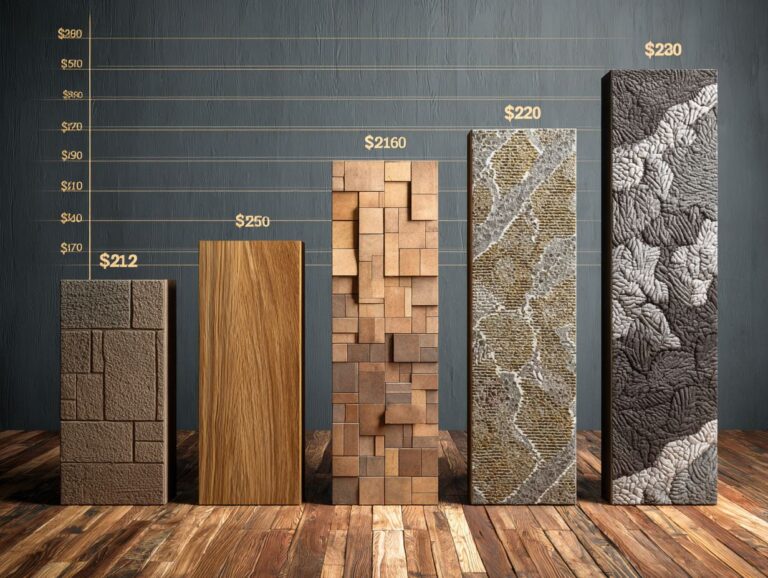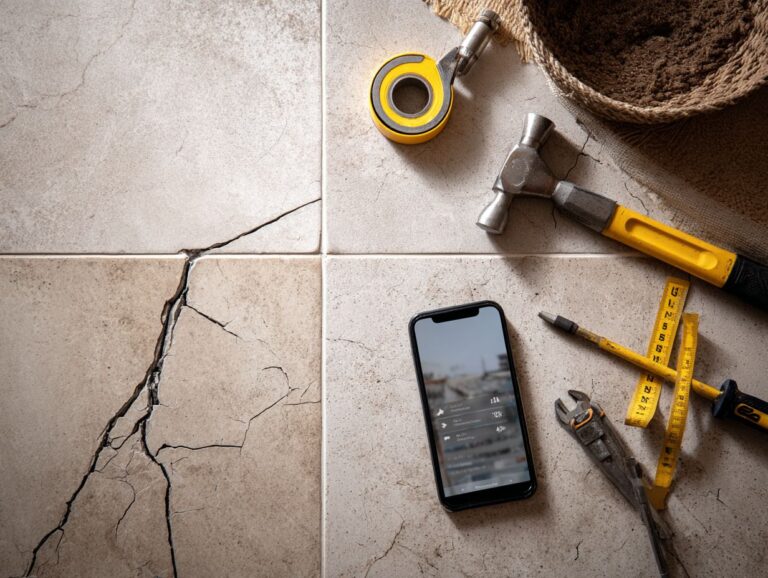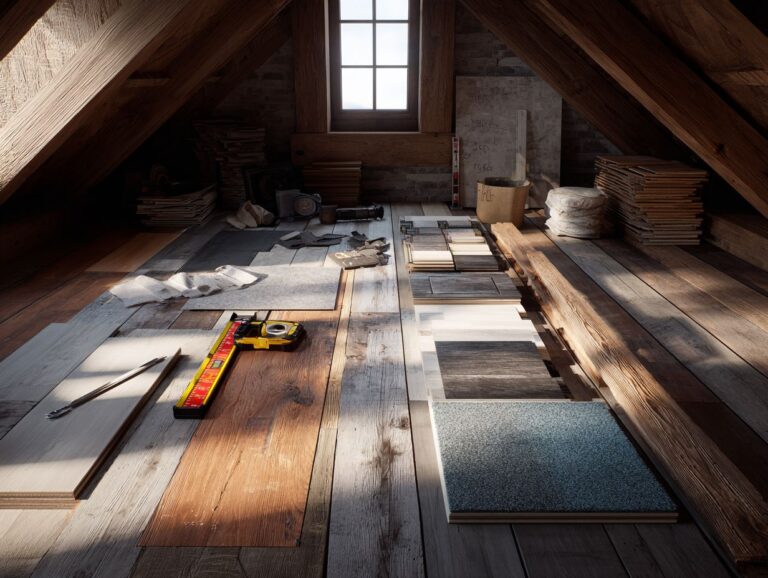Cost to Remove Old Flooring – By Material Type
Taking out old flooring can be a big factor in the cost of replacing your floors. Knowing the prices for hardwood, laminate, or tile flooring is important. This guide will explain removal costs, compare doing the installation yourself to hiring a professional, and help you choose the best option for your next home project. Learn how to plan your budget for your new flooring!
Key Takeaways:
Contents
- Flooring Removal and Installation Cost Analysis 2024
- Types of Flooring Materials
- Cost Breakdown by Material Type
- Additional Costs to Consider
- DIY vs. Professional Removal
- Frequently Asked Questions
- What is the average cost to remove old hardwood flooring?
- How much does it typically cost to remove old carpet flooring?
- What is the average cost to remove old tile flooring?
- Is there a flat fee for removing old laminate flooring?
- How much does it typically cost to remove old vinyl flooring?
- What factors can affect the cost of removing old flooring?
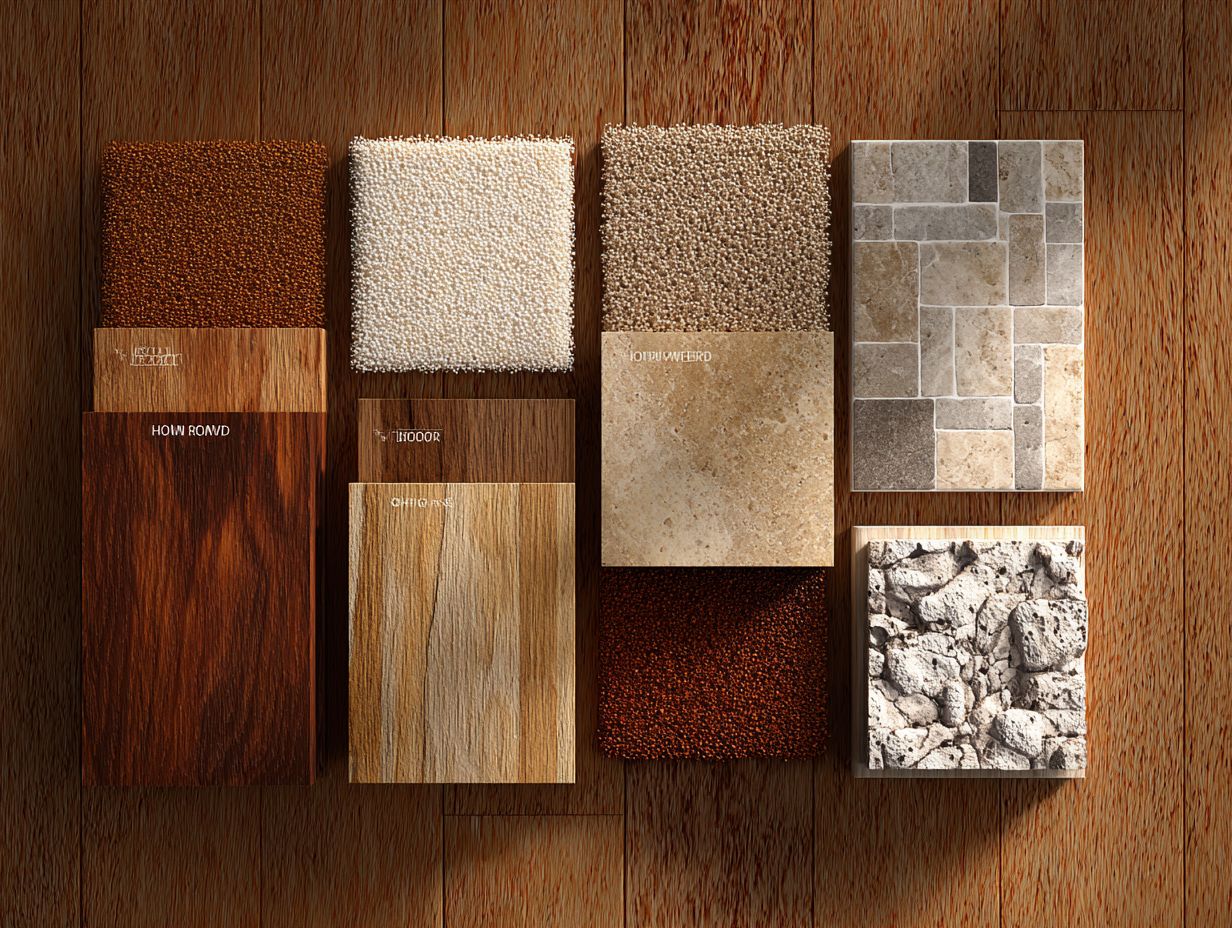
Removal costs can significantly impact your overall flooring budget, sometimes accounting for up to 20% of total project expenses.
For instance, a homeowner renovating their 1,500 square-foot living room estimated $3,000 for new hardwood flooring but failed to include the $600 needed for old carpet removal. This oversight led to a budget shortfall, forcing them to take on unexpected debt.
To avoid such surprises, always itemize your project costs upfront. Use tools like HomeAdvisor’s cost calculator to get exact estimates for removal and trash services. Think about talking to an expert to get a specific price estimate for a more exact budget.
Flooring Removal and Installation Cost Analysis 2024
Flooring Removal and Installation Cost Analysis 2024
Flooring Cost Breakdown: Removal Costs
Flooring Cost Breakdown: Installation Costs
Flooring Cost Breakdown: Additional Costs
The Flooring Removal and Installation Cost Analysis 2024 gives details on the different expenses involved in taking out old flooring and putting in new materials. Knowing these expenses is important for homeowners and businesses planning renovation or building projects.
Flooring Cost Breakdown highlights the expenses involved in both removal and installation processes. Removal Costs vary significantly depending on the flooring type:
- Carpet Removal: Priced at $1.15 per square foot, this is the most economical option for removal, likely due to the ease of pulling up carpet compared to other materials.
- Tile Removal: At $4.50 per square foot, this is the most expensive removal process, reflecting the labor-intensive nature and potential need for specialized equipment to handle the adhesive materials.
- Old Hardwood Floor Removal: Costs $1.50 per square foot, slightly higher than carpet due to the complexity of dismantling hardwood boards.
Installation Costs detail the expenses of laying new flooring:
- Hardwood Installation: At $18.00 In terms of cost per square foot, it’s the most expensive choice due to the high-quality material and the careful process needed for installation.
- Engineered Wood Installation: Priced at $13.50 per square foot, offering a balance of durability and aesthetic appeal at a lower cost than solid hardwood.
- Bamboo Installation: Costs $12.00 per square foot, appealing for its sustainability and unique appearance.
- Laminate Installation: At $9.00 per square foot, provides a cost-effective alternative that mimics the look of wood and is easier to maintain.
- Vinyl Installation: The most economical at $6.00 per square foot, known for its versatility and water-resistant properties.
Additional Costs include:
- Subfloor Preparation: Necessary for ensuring a stable base, costing $1.50 per square foot.
- Underlayment: Adds $2.00 per square foot for padding and moisture resistance, important for long-lasting floors.
- Flooring Reparations: At $11.00 per square foot, addressing any damage or imperfections in the existing subfloor before new installation.
These cost parts give a complete look at the financial aspects of flooring projects. By learning about the detailed costs, consumers can choose wisely for their flooring changes, considering quality, appearance, and cost.
Factors Influencing Removal Costs
Key factors influencing removal costs include flooring type, installation complexity, and local labor rates, which can vary widely.
Additional considerations involve the removal method and underlayment requirements.
For instance, removing carpet typically ranges from $0.50 to $1.50 per square foot, while hardwood can be $3 to $6 due to its installation complexity. Local labor rates, which you can check on HomeAdvisor, might range from $35 to $80 per hour.
Manual removal is generally cheaper than mechanical methods, which can double the price, especially for glued-down carpet. If underlayment needs to be replaced, it may add $0.50 to $1.00 per square foot.
Types of Flooring Materials
Choosing the right flooring material is important because each type has specific features that affect costs for replacing and removing it. For a deeper understanding of these costs, our guide on hidden flooring costs reveals what quotes often leave out.
Hardwood Flooring
Hardwood flooring is a popular choice due to its durability and timeless appeal, but it can be one of the costliest options available.
Typically, hardwood flooring ranges from $6 to $12 per square foot, depending on the wood species and finish.
While oak and maple are popular for their sturdiness, exotic options like cherry or teak can significantly increase costs. Installation can be challenging-it requires adjusting the wood to the environment and careful cutting.
If not handled correctly, hardwood can get damaged by moisture, so it’s not a good choice for bathrooms or basements unless you take the right precautions.
Think about these factors carefully to make a lasting investment in your home.
Laminate Flooring
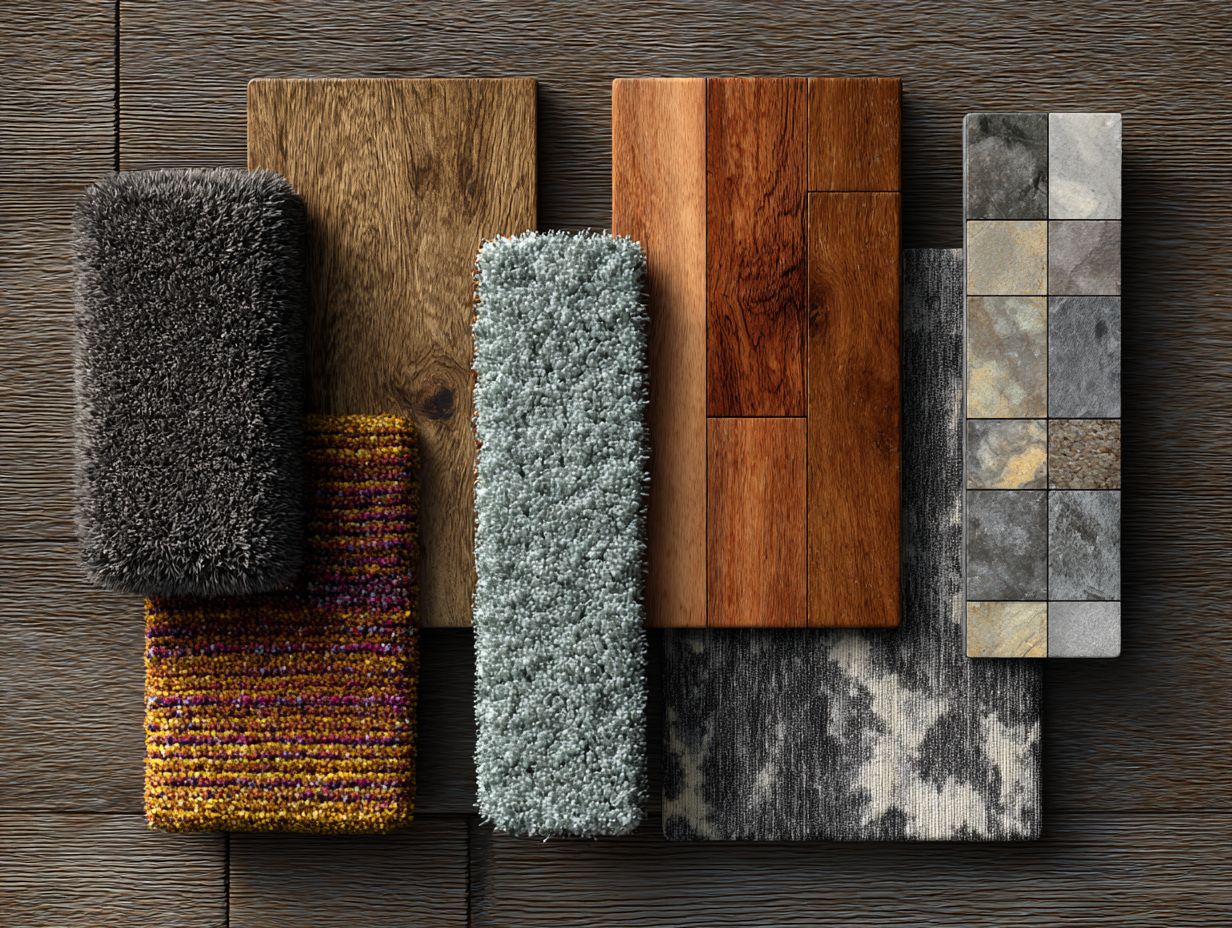
Laminate flooring is an affordable choice that resembles wood, appealing to people who want to cut costs.
Laminate usually costs between $1 to $5 per square foot, which is much less expensive than hardwood, usually costing between $8 to $15 per square foot.
Installation is a breeze due to the click-and-lock system, allowing many DIY enthusiasts to complete the job without professional help.
Homeowners can choose from a variety of styles and finishes, including wood, stone, and tile appearances, which adds versatility to any space.
While laminate is low-maintenance, potential buyers should note its lower resale value compared to traditional hardwood, which may impact long-term investment.
Tile Flooring
Tile flooring, like ceramic and natural stone, lasts a long time and does not absorb water, which makes it ideal for kitchens and bathrooms.
Besides being long-lasting, tile flooring provides a wide range of design options. Homeowners can pick from different styles, colors, and textures to match their preferences.
Installation costs can be higher than other flooring types, typically ranging from $8 to $15 per square foot. Common options include:
- Ceramic tiles, which are budget-friendly
- Porcelain tiles, known for their density and resistance
- Natural stone tiles like slate or granite, which bring a luxurious feel but come with a higher price tag and maintenance needs
In the end, choose tiles that match your design ideas and fit within your budget.
Carpet Flooring
People like carpet flooring because it feels cozy and warm, which makes it a good choice for living rooms and bedrooms.
Plus providing a soft walking surface, carpets also offer insulation, helping to maintain a comfortable temperature indoors. They require regular maintenance, including vacuuming and occasional deep cleaning, typically costing between $100-$300 depending on the service.
When considering installation, expect to pay around $2 to $6 per square foot. Removal can be labor-intensive; homeowners should budget an extra $1 to $3 per square foot for labor and disposal.
Thus, when you choose a carpet, you need to consider how comfortable it is, how easy it is to care for, and how difficult it might be to replace.
Vinyl Flooring
Vinyl flooring has become more popular because it is affordable and fits well in many different home settings.
A key benefit of vinyl flooring is that it doesn’t get damaged by water, which makes it a good choice for kitchens and bathrooms. Most vinyl options are designed to withstand spills without warping.
For regular cleaning, just mop using water and a mild detergent. Installation costs can range from $2 to $5 per square foot, depending on the type and brand.
For eco-conscious consumers, look for options labeled as PVC-free or made from recycled materials, such as those offered by companies like Mannington or Karndean.
Concrete Flooring
Concrete flooring is a strong contender for high-traffic areas, known for its durability and modern aesthetic.
Its affordable price, usually between $2 to $6 per square foot, makes it a good choice compared to hardwood or tile. Besides its lasting strength, decorative choices like shiny finishes or imprinted patterns can improve looks, letting you add personal style without losing function.
Moisture can cause problems; in wet areas, using a moisture barrier during installation is important to avoid damage. By considering these factors, homeowners can make a decision that fits their needs and budget.
Cost Breakdown by Material Type
Knowing the removal costs for each type of flooring can help homeowners plan their budgets for their projects.
Hardwood Flooring Removal Costs
Removing hardwood flooring typically ranges from $2 to $5 per square foot, factoring in labor and disposal fees.
Labor rates for hardwood removal can vary significantly based on location and company experience, typically falling between $50 and $100 per hour.
Additional costs may arise from damage under the flooring; for instance, if subfloor repair is needed, expect to pay upwards of $1.50 per square foot. Underlayment removal might add $0.50 to $1.00 per square foot, depending on conditions.
It’s important to look at these possible costs before starting the project to prevent unexpected problems.
Laminate Flooring Removal Costs
Removing laminate flooring generally costs $1 to $3 per square foot. This makes it an affordable choice for homeowners.
Opting for DIY removal can maximize savings, as laminate typically features a tongue-and-groove construction that enables easy disassembly.
Begin by gathering essential tools: a pry bar, utility knife, and hammer. Take care to remove baseboards first to prevent damage.
One mistake people often make is hurrying. Start in one area and work your way out, carefully lifting boards to avoid damage.
Make sure to have good airflow when working on repairs to the subfloor to safeguard your health and property.
Tile Flooring Removal Costs
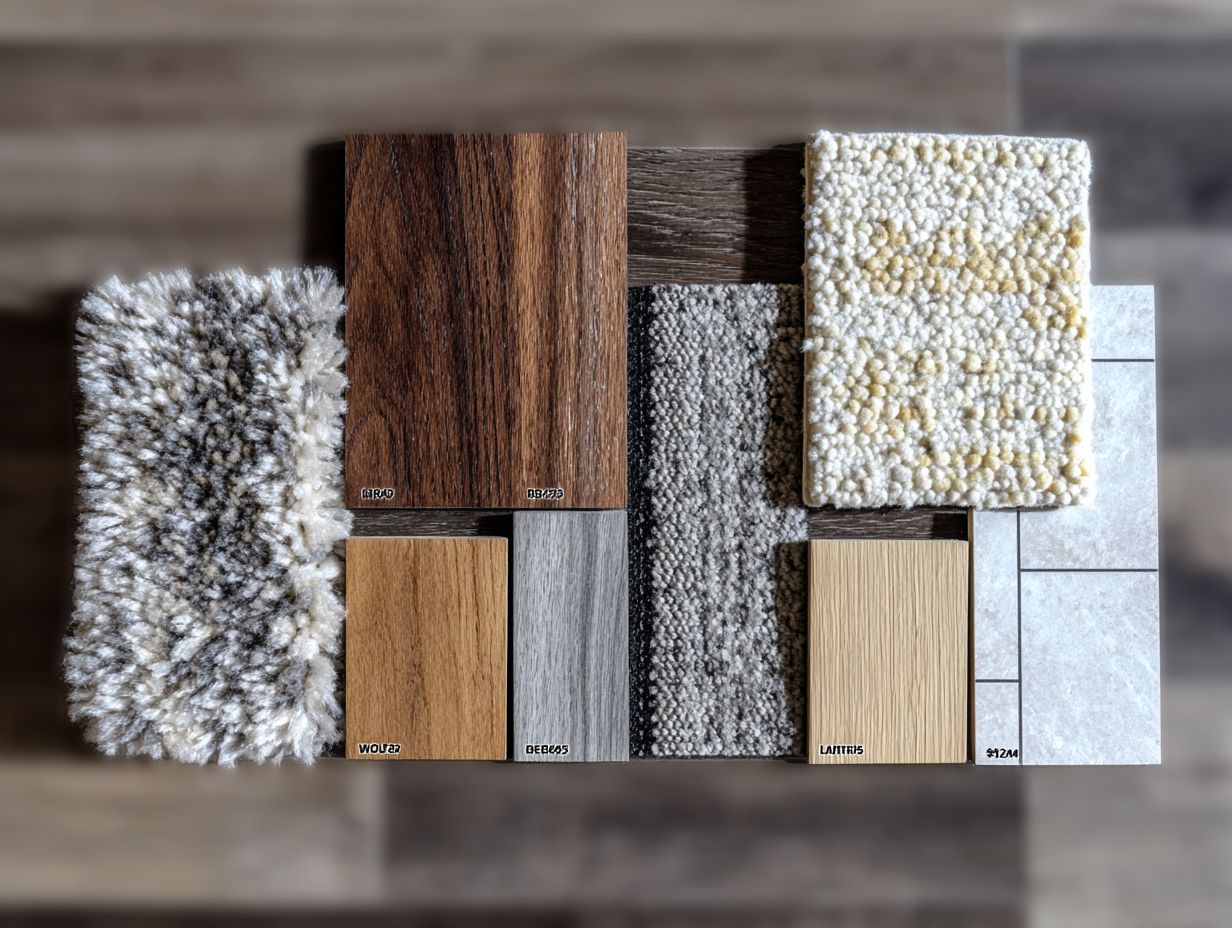
Tile flooring removal can be labor-intensive, with costs ranging from $3 to $7 per square foot depending on the type of tile and installation method.
Ceramic tiles generally incur lower removal costs, while natural stone tiles can be more expensive due to their weight and fragility.
If the original installation involved glue or mastic, extraction may be more complex, resulting in higher labor fees. It’s important to also consider potential subfloor repairs; damaged subfloors can add $1 to $3 per square foot to your total cost.
To save money, try doing the removal work yourself when you can. Use tools like a pry bar and a hammer for simple tasks.
Carpet Flooring Removal Costs
Taking out carpet generally costs between $1 and $2 for each square foot, making it one of the least expensive flooring types to change.
When planning your carpet removal, consider additional costs like disposal fees, which can range from $15 to $40 per trip, depending on your local requirements.
You’ll also need to address the padding, which typically adds $0.25 to $0.50 per square foot to the removal cost.
Don’t forget about tack strips; these may require extra effort, as they need to be pried up and disposed of properly.
Figuring out these elements correctly will give you a better idea of the overall expenses for your project.
Vinyl Flooring Removal Costs
Vinyl flooring removal costs can range from $1.50 to $3.50 per square foot, depending on the adhesion method used.
The type of vinyl also influences overall costs. For example, sheet vinyl often has a lower removal cost than vinyl plank, which can require more labor due to its tongue-and-groove design.
Any necessary subfloor preparation can add $0.50 to $1.00 per square foot if repairs or additional materials are needed.
Tools like a flooring scraper ($25-$50) and a pry bar ($10) can be essential for DIY removals, while hiring a professional may range from $2 to $4 per square foot, factoring in labor and disposal fees.
Concrete Flooring Removal Costs
Removing concrete flooring can be expensive, often costing between $5 and $10 per square foot due to the specialized equipment required.
Homeowners should consider the cost of equipment rental, which can range from $50 to $200 per day depending on the machinery needed, such as a jackhammer or concrete saw. Labor costs, whether hiring professionals or enlisting friends, can add to the total expense.
To minimize costs, prepare the area by removing furniture and carpeting beforehand. The process of removing concrete typically involves slicing it into smaller sections and then using a jackhammer to break it up.
Make sure to wear safety gear to prevent injuries during this process.
Additional Costs to Consider
Homeowners should plan for extra costs that can come up during a flooring job, aside from the basic removal fees.
Disposal Fees
Disposal fees for removed flooring can range from $50 to $200, depending on local regulations and the type of material being discarded.
To effectively manage these costs, homeowners should first research their local waste management policies. Many municipalities have specific guidelines and may offer free drop-off sites for materials like carpet or tile.
Consider reaching out to local contractors or flooring stores, as they often have partnerships with disposal services that can provide discounted rates. Utilizing online platforms such as Earth911 can help identify nearby recycling centers.
Check for community waste events that might offer free disposal options to help reduce expenses.
Labor Costs
Labor costs can account for 50-70% of your total flooring project expenses, depending on the complexity of the removal.
Labor rates can vary significantly based on location and the contractor’s experience. For example, urban areas typically have higher rates-potentially $100-$150 per hour-compared to rural regions, where rates might hover around $50-$80 per hour.
To get a fair price, homeowners should get at least three estimates from certified contractors. Look at reviews on websites like Yelp or Angie’s List to judge the quality of work. This can help avoid problems and extra expenses later.
Subfloor Repairs
Subfloor repairs can add an additional $100 to $500 to your flooring project, depending on the extent of damage.
Subfloor problems often remain hidden until the flooring is removed.
Common issues include water damage, which typically costs $300 to $500 to repair, or squeaky floors caused by loose boards that can be fixed for about $100. Termite damage might surprise homeowners, adding anywhere from $200 to $600 for repairs.
Before starting a project, it is wise to set aside additional funds for potential repairs and thoroughly inspect the existing flooring to identify any issues.
DIY vs. Professional Removal
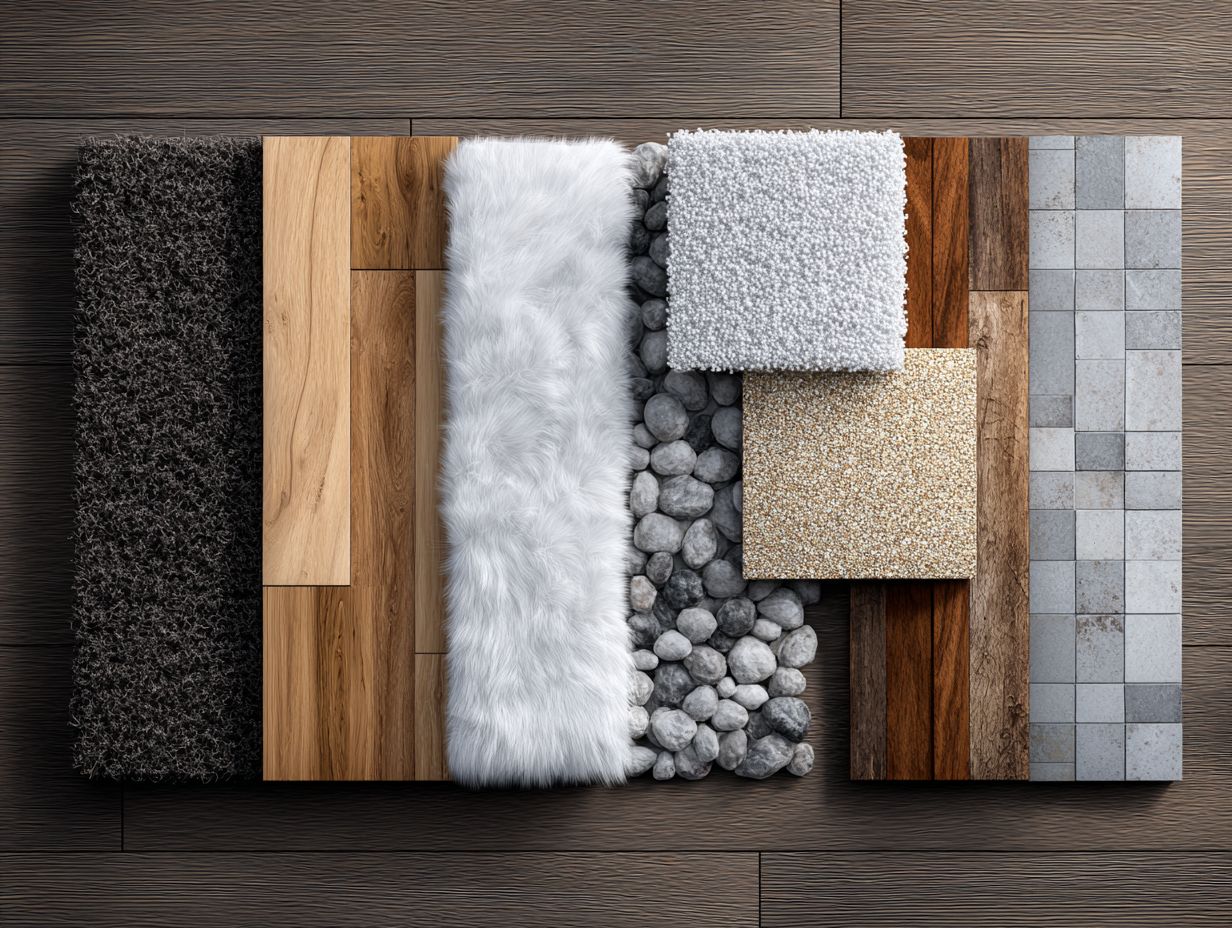
Choosing whether to do it yourself or hire professionals can greatly influence the cost and quality of your flooring project. For those considering this decision, understanding when it’s best to DIY or call in a professional for tile floor crack repair might offer helpful insights into making the right choice for your flooring needs.
Pros and Cons of DIY
DIY removal can save you 30-50% on labor costs, but it comes with its own set of challenges and risks.
Consider the pros and cons before diving in.
Pros include significant cost savings and flexibility in scheduling your project. Cons involve the time consumption and potential for damage to underlying floors, which may increase repair costs.
Essential tools for this task include:
- a crowbar for lifting floors,
- a reciprocating saw for cutting through stubborn materials,
- and a dust extractor to keep your workspace clean.
Proper preparation and careful methods can lower risks, allowing dedicated homeowners to handle DIY removal.
When to Hire a Professional
Hiring a professional may be essential if the flooring removal involves complex installations or specialized equipment.
For instance, if you have extensive damage to the subflooring, a contractor can assess and repair it properly to prevent further complications.
If your floors are made of heavy materials like concrete, using the right equipment is important for safe removal.
When selecting contractors, research local options and check reviews on platforms like Angie’s List or Yelp.
Always obtain at least three detailed estimates to compare pricing and scope of work. This method helps you select a reliable expert who fits your project’s requirements.
Frequently Asked Questions
What is the average cost to remove old hardwood flooring?
The average cost to remove old hardwood flooring is between $1,000 and $2,500. This includes labor and disposal fees.
How much does it typically cost to remove old carpet flooring?
The cost to remove old carpet flooring is usually between $0.50 to $1 per square foot. This price may vary depending on the condition of the carpet and the amount of labor required.
What is the average cost to remove old tile flooring?
The average cost to remove old tile flooring is between $3 to $6 per square foot. This can vary depending on the type of tile, the size of the area, and the difficulty of removal.
Is there a flat fee for removing old laminate flooring?
No, there is not a flat fee for removing old laminate flooring. The cost will depend on the size of the area, the condition of the laminate, and the labor required for removal.
How much does it typically cost to remove old vinyl flooring?
The cost to remove old vinyl flooring is usually between $1 to $2 per square foot. This price may vary depending on the condition of the vinyl and the amount of labor required for removal.
What factors can affect the cost of removing old flooring?
The cost of removing old flooring can be affected by factors such as the type of material, the size of the area, the condition of the flooring, and the amount of labor required. Other factors can include disposal fees and the difficulty of removal.

